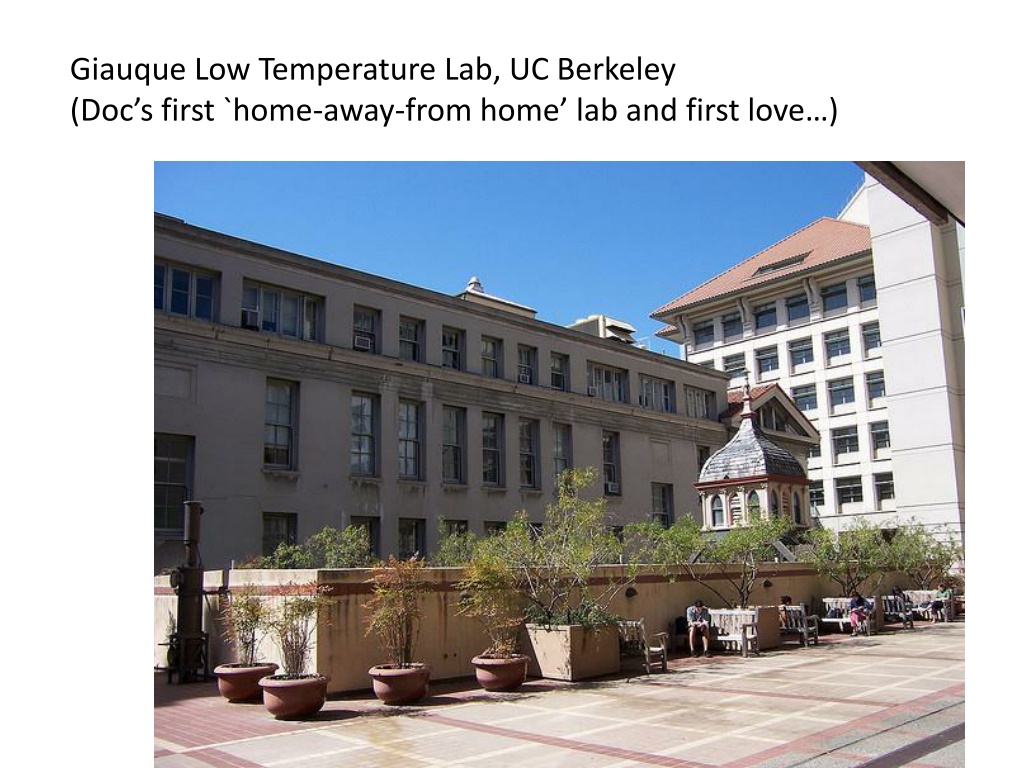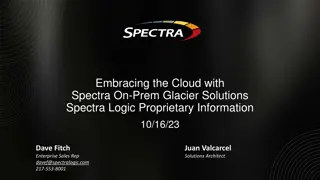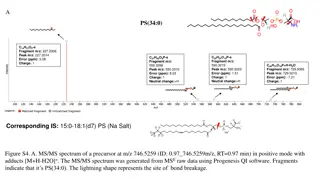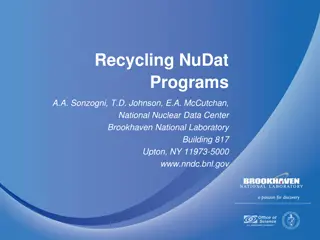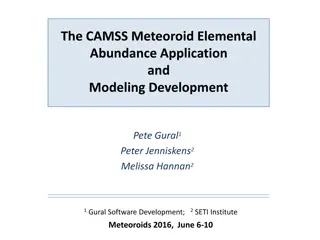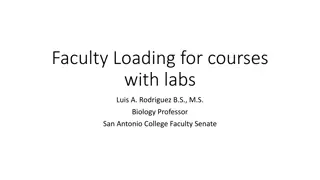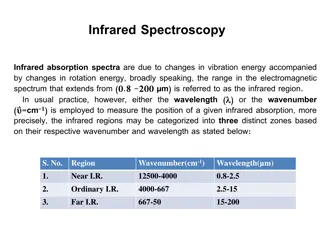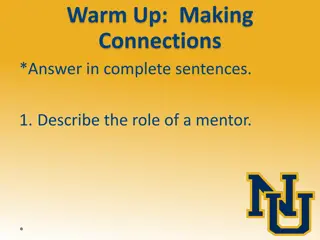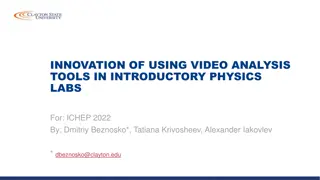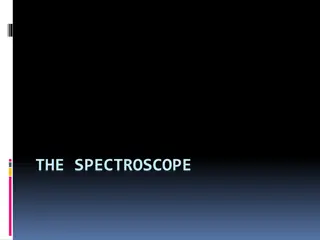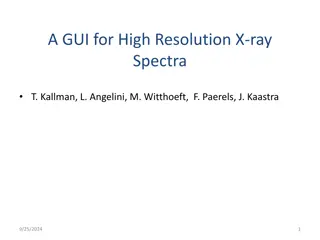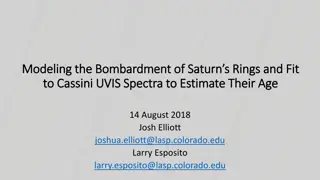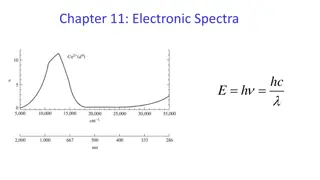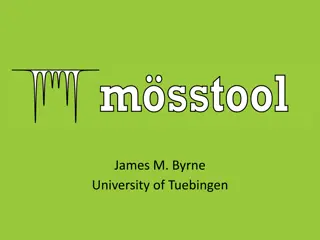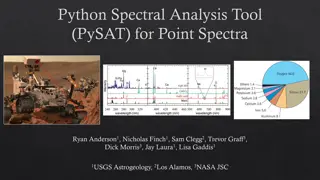Journey Through Science: Labs, Spectra, and Mentors
Explore a visual journey through various scientific labs, equipment, and notable personalities in the field of chemistry, including Giauque Low Temperature Lab at UC Berkeley, advanced measuring systems, and insights into the lives of renowned scientists like E. Bright Wilson and Doc Fong. Witness the beauty of diatomic IR spectra and dive into the complexities of the Schrodinger equation for the harmonic oscillator.
Download Presentation

Please find below an Image/Link to download the presentation.
The content on the website is provided AS IS for your information and personal use only. It may not be sold, licensed, or shared on other websites without obtaining consent from the author.If you encounter any issues during the download, it is possible that the publisher has removed the file from their server.
You are allowed to download the files provided on this website for personal or commercial use, subject to the condition that they are used lawfully. All files are the property of their respective owners.
The content on the website is provided AS IS for your information and personal use only. It may not be sold, licensed, or shared on other websites without obtaining consent from the author.
E N D
Presentation Transcript
Giauque Low Temperature Lab, UC Berkeley (Doc s first `home-away-from home lab and first love ) http://farm5.staticflickr.com/4062/4301508107_6b1a5d0408_z.jpg
http://www.science.uva.nl/research/mmm/pictures/17tesla/17T_7.gifhttp://www.science.uva.nl/research/mmm/pictures/17tesla/17T_7.gif 3He low temperature cryostat The rest of the measuring system
http://www.nature.com/ncomms/2015/150706/ncomms8611/images_article/ncomms8611-f1.jpghttp://www.nature.com/ncomms/2015/150706/ncomms8611/images_article/ncomms8611-f1.jpg What the equipment produces: Heat capacity spectra (C/T vs T plots)
The Univ. of Michigan/Westrum Fiasco and how Doc rekindles a love with another kind of spectra .
http://pages.pomona.edu/~wes04747/chem164/MolZoo/EBW.jpg E. Bright Wilson Harvard University, Chemistry National Medal of Science 1975 T.W. Richards Endowed Chair His son (Ken)wins Nobel in Physics (Cornell Univ.) Linus Pauling Cal Tech, Chemistry Nobel Prize in Chemistry 1954 Nobel Peace Prize 1962
http://academictree.org/photo/cache.068119.jpg YOU ! Doc Fong SUNY Alfred State Chemistry Mr. `Fixit (and nut case) R. L. Kuczkowski University of Michigan, Chemistry Department Chair Doc s favorite, best mentor
Figure 1: Assignment of m and J for P and R Branches of a Hypothetical Diatomic IR spectrum
Solution to reduced mass Schrodinger equation for the Harmonic Oscillator =(1/2nn!)1/2 ( / )1/4 Hn( 1/2x) exp( - x2/2), n = 0,1,2 . = (k / 2 ) and Hn( 1/2x) is the `Hermite Polynomial Some Hermite polynomials (z= ( 1/2x ) (Table 5.2 pg. 170) n Hn(z) 0 1 1 2z 2 4z2-2 3 8z3-12z 4 16z4-48z2+12 5 32z5 -16z3 +120z The most important result: (n=0,1,2 ..) En = h (n + ) where = h(k/ )1/2 = (k/ )1/2 2
Images of Quantum Harmonic Oscillator (x) and (x)* . (x) in kx2 potential well (see fig. 5.8 pg. 171 too) (x) (x)* . (x) n 3 2 1 0 kx2 potential well
Quantum harmonic oscillator energy levels evenly spaced and separated by = (k/ )1/2 http://www4.uwsp.edu/physastr/kmenning/images/pse6.41.f.14.gif n 5 4 3 2 1 0 E(n) = (n + ) n=0,1,2,3, .
Key Properties of Quantum Harmonic Oscillator solution (see pp. 172-174) n=0,2,4 n are even functions n=1,3,5 n are odd functions even => (x) = (-x); odd => (x) =- (-x)] Note that: even*even = even (ex. x2 * x2=x4) odd* odd = even (ex. x3*x1= x4) odd* even = odd (ex. x3*x2=x5) Since: integrations < |Aop| > are from - + => average x = < n|x| n> = 0 for all n Average p = = < n|-i d/dx| n>=0 for all n From chapter 4 also: < n| m> = nm
USING ODD/EVEN PROPERTY TO RATIONALIZE THE n= 1 SELECTION RULE FOR IR TRANSITIONS Dipole operator =(q*x) `couples n with m to produce transition via: http://www4.uwsp.edu/physastr/kmenning/images/pse6.41.f.14.gif m.(qx) n dx= q m.(x) n dx => m and n must be odd/even or even odd else integral 0 => minimum m-n= 1
